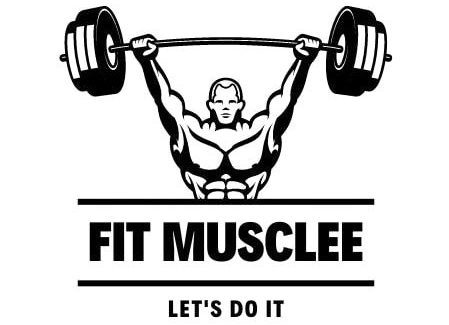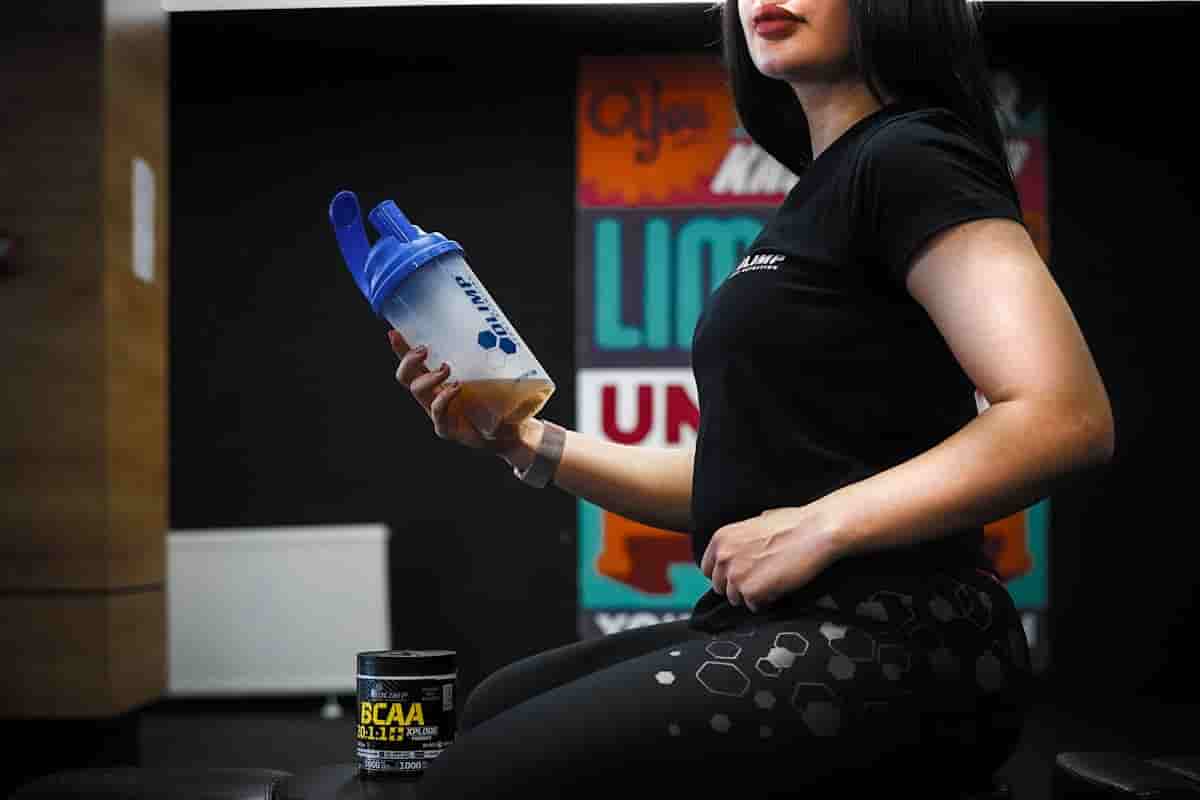Here is your complete guide to protein with creatine.
Introduction to Protein with Creatine
Protein with creatine is one of the most talked-about supplement combinations in the fitness world. Whether you’re a seasoned athlete, a bodybuilder, or just starting your fitness journey, understanding how they work—and whether it’s right for you—can make a significant difference in your results. This comprehensive guide explores everything you need to know about them, from the science behind it to practical tips for getting the most out of your supplements.
If you’ve ever wondered about the best way to build muscle, boost strength, and recover faster, you’ve probably come across the term protein with creatine. This combination is popular among athletes and gym-goers for good reason: both supplements are backed by science and have unique, complementary effects on performance and muscle growth.
It is not just a buzzword—it’s a strategic approach to supplementation. By combining high-quality protein (like whey or casein) with creatine, you’re targeting both muscle protein synthesis and cellular energy production. This means you’re supporting your muscles with the building blocks they need to grow, while also fueling your workouts with extra energy.
Why do so many people choose them? The answer lies in the synergy between these two supplements. While protein provides essential amino acids for muscle repair and growth, creatine enhances your body’s ability to produce quick bursts of energy, making it easier to push harder during intense training sessions.
Throughout this article, we’ll dive deep into the science, benefits, best practices, and safety of using them. You’ll learn how to maximize your results, avoid common mistakes, and decide if this supplement stack is right for your goals.
Quick Comparison – Protein, Creatine, and Their Combined Effects
| Supplement | Main Benefit | How It Works | Typical Use |
|---|---|---|---|
| Protein | Muscle repair & growth | Provides amino acids | Post-workout, daily |
| Creatine | Boosts strength & power | Increases ATP production | Pre/post-workout |
| Protein with Creatine | Synergistic muscle & energy gains | Combines both effects | Pre/post-workout |
What is Protein?
Protein is a macronutrient made up of amino acids, which are the building blocks of muscle tissue. It’s essential for repairing muscle fibers after exercise, supporting immune function, and maintaining healthy skin, hair, and nails.
Types of Protein:
- Whey protein: Fast-digesting, ideal for post-workout
- Casein protein: Slow-digesting, great for nighttime recovery
- Plant-based proteins: Good for vegans/vegetarians (pea, rice, soy)
Types of Protein and Their Benefits
| Type | Digestion Speed | Best For | Key Benefits |
|---|---|---|---|
| Whey | Fast | Post-workout | Rapid muscle repair |
| Casein | Slow | Overnight recovery | Sustained amino acid release |
| Plant-based | Varies | Vegan/vegetarian diets | Allergy-friendly, fiber |
What is Creatine?
Creatine is a naturally occurring compound found in small amounts in foods and produced by the body. It’s stored in muscle cells and used to rapidly generate ATP (adenosine triphosphate), the primary energy currency during high-intensity, short-duration activities like sprinting or heavy lifting24.
Forms of Creatine:
- Creatine monohydrate (most researched and effective)
- Creatine ethyl ester
- Buffered creatine
Forms of Creatine and Key Features
| Form | Absorption | Cost | Research Support |
|---|---|---|---|
| Monohydrate | High | Low | Extensive |
| Ethyl Ester | Moderate | Moderate | Limited |
| Buffered | Moderate | High | Mixed |
How Protein with Creatine Works Together
Combining them leverages the unique strengths of both supplements. Here’s how the synergy works:
- Protein delivers amino acids needed for muscle repair and growth.
- Creatine increases the availability of ATP, allowing you to train harder and longer.
- Together, they may enhance muscle protein synthesis and accelerate recovery after workouts56.
Mechanisms at Play:
- Creatine boosts your ability to perform high-intensity exercise, which can lead to greater muscle breakdown—a stimulus for growth.
- Protein ensures your muscles have the raw materials to rebuild stronger after this breakdown.
Mechanisms of Action – Protein vs. Creatine vs. Combination
| Mechanism | Protein Alone | Creatine Alone | Protein with Creatine |
|---|---|---|---|
| Muscle Protein Synthesis | High | Moderate | Highest |
| ATP Production | Low | High | High |
| Muscle Recovery | Moderate | Moderate | High |
| Workout Performance | Moderate | High | Highest |
Benefits of Taking Protein with Creatine
The advantages of using them go beyond what each supplement can do on its own. Here’s what science and experience reveal:
- Enhanced Muscle Gain and Strength:
Combining these supplements may support greater increases in lean muscle mass and strength, especially when paired with resistance training56. - Improved Workout Performance:
Creatine helps you push harder in the gym, while protein aids recovery, allowing for more frequent and intense training sessions17. - Faster Recovery:
Protein repairs muscle damage, and creatine may reduce inflammation and muscle soreness, speeding up recovery between workouts1. - Increased Muscle Volume:
Creatine draws water into muscle cells, making muscles look fuller and potentially aiding growth signals. - Muscle Mass Maintenance During Cutting:
When dieting, they can help preserve muscle mass, reducing the risk of muscle loss during calorie restriction1.
Summary of Benefits – Protein Alone, Creatine Alone, Protein with Creatine
| Benefit | Protein Alone | Creatine Alone | Protein with Creatine |
|---|---|---|---|
| Muscle Growth | Yes | Yes | Yes (possibly greater) |
| Strength Gains | Moderate | High | High |
| Workout Endurance | Moderate | High | High |
| Recovery Speed | High | Moderate | High |
| Muscle Fullness | Low | High | High |
| Fat Loss Support | Moderate | Moderate | High |
Scientific Studies: What the Research Says
Numerous studies have examined the effects of these supplementation, both independently and in combination.
- Body Composition & Strength:
Research shows that both of them supplementation can increase total body and fat-free mass when combined with resistance training5. However, some studies suggest that taking them together does not necessarily provide additional benefits over taking each individually38. - Performance:
Creatine is consistently shown to improve high-intensity exercise performance, while protein supports muscle repair and growth124. - Recovery:
Both supplements may help reduce muscle damage and support quicker recovery, though the combined effect is not always significantly greater than either alone38.
Key Takeaway:
While the combination is safe and effective, the main driver of results is consistent training and adequate nutrition. Supplements are most beneficial when used to fill dietary gaps.
How to Take Protein with Creatine for Maximum Results
To get the most from them, timing, dosage, and consistency are crucial.
Optimal Timing:
- Post-Workout:
Taking both immediately after training can maximize muscle repair and replenish energy stores. - Pre-Workout:
Some prefer creatine before workouts for an energy boost, with protein after for recovery.
Dosage Guidelines:
- Protein: 20–40g per serving, depending on your body weight and goals.
- Creatine: 3–5g daily, with or without a loading phase.
Mixing Methods:
- Combine creatine powder with your protein shake for convenience.
- Use water or milk as a base for better absorption.
Sample Supplement Schedule:
| Day | Pre-Workout | Post-Workout |
|---|---|---|
| Monday | Creatine (5g) | Protein (30g) + Creatine (5g) |
| Wednesday | Creatine (5g) | Protein (30g) + Creatine (5g) |
| Friday | Creatine (5g) | Protein (30g) + Creatine (5g) |
Tips:
- Stay hydrated, as creatine draws water into muscles.
- Consistency is key—take creatine daily, even on rest days.
- Adjust protein intake based on dietary sources.
Best Sources of Protein and Creatine
You can get both of them from food and supplements.
Top Protein Sources:
- Lean meats (chicken, beef, turkey)
- Fish
- Eggs
- Dairy (milk, yogurt, cheese)
- Plant-based (beans, lentils, tofu, tempeh)
Top Creatine Sources:
- Red meat (beef, pork)
- Fish (salmon, tuna)
- Supplements (creatine monohydrate powder)
Choosing Supplements:
- Look for third-party tested products.
- Prefer creatine monohydrate for proven effectiveness.
Who Should Use Protein with Creatine?
Protein with creatine is ideal for:
- Athletes and bodybuilders seeking muscle and strength gains
- Fitness enthusiasts wanting to improve performance
- Older adults aiming to maintain muscle mass15
Special Considerations:
- Women can safely use both supplements.
- Vegetarians/vegans may benefit more from creatine, as their diets are typically lower in this compound.
Safety, Side Effects, and Myths
Both of them are considered safe for most people when used as directed124.
Common Concerns:
- Kidney Health:
Studies show no adverse effects in healthy individuals, but those with pre-existing kidney issues should consult a doctor14. - Dehydration:
Creatine may increase water retention in muscles, so stay hydrated. - Digestive Upset:
Some may experience bloating or stomach discomfort—start with smaller doses if needed.
Myths vs. Facts:
| Myth | Fact |
|---|---|
| Creatine damages kidneys | No evidence in healthy individuals |
| Protein with creatine causes bloating | Only in some people, usually mild |
| Only men should use creatine | Safe and effective for women too |
| Creatine is a steroid | It’s a natural compound, not a steroid |
Sample Meal and Supplement Plans
Example Daily Plan for Muscle Gain:
- Breakfast:
Eggs, whole grain toast, fruit - Snack:
Greek yogurt with berries - Lunch:
Grilled chicken, brown rice, vegetables - Pre-Workout:
Creatine (5g) in water - Post-Workout:
Whey protein shake (30g) + Creatine (5g) - Dinner:
Salmon, quinoa, steamed broccoli
Tips for Special Diets:
- Vegans: Use plant-based protein powders and supplement with creatine monohydrate.
- Keto: Choose low-carb protein powders and stick to meats and fish for meals.
Frequently Asked Questions (FAQs) about Protein with Creatine
Can I take protein with creatine at the same time?
Yes, you can mix both in the same shake for convenience.
Read Also: Hammer Strength Chest Press.
Does protein with creatine cause kidney damage?
No evidence supports this in healthy people, but those with kidney disease should consult a doctor14.
Read Also: Lat Pulldown Attachments.
Should I cycle creatine when using protein?
Cycling is not necessary; daily use is safe for most.
Read Also: Lat Pulldown Attachments.
Is protein with creatine safe for women?
Absolutely. Both supplements are effective and safe for women.
Read Also: Gym Machines for Chest.
Can I use protein with creatine while losing weight?
Yes, this combo can help preserve muscle mass during calorie deficits1.
Read Also: Bar for Hip Thrusts.
Conclusion
Combining them is a proven, safe, and effective strategy for anyone looking to build muscle, increase strength, and recover faster. While the combination may not always provide dramatically greater results than each supplement alone, it simplifies your routine and ensures you’re covering all bases for muscle growth and performance.
Read Also: Creatine Powder vs Pill.
If you’re consistent with your training, eat a balanced diet, and use supplements wisely, they can help you reach your fitness goals faster. As always, consult a healthcare professional or sports nutritionist if you have any underlying health conditions or specific dietary needs.
Read Also: Creatine with Flavor.
References and Resources Used in This Article:
- Creatine in Health and Disease – PMC – PubMed Central.
- International Society of Sports Nutrition position stand: creatine.
- What is creatine? Potential benefits and risks of this … – Harvard Health.
- Scientific basis and practical aspects of creatine supplementation for.
- The Effects of Creatine Monohydrate and/or Whey Protein on … – MDPI.
- Creatine: What It Does, Benefits, Supplements & Safety.
- The effects of creatine and whey protein supplementation on body.

